Follow these simple tips on how to make the Perfect Poached Egg. With tips and tricks to make your poached egg perfect every time.

I could eat poached eggs for breakfast every day and never get bored, I love them, but they have to be done right and for me that means a running yolk. Don't like a runny yolk? Just cook them for longer!
My favourite way to eat poached eggs? Usually on toast with smoked salmon, avocado and chives. It is pretty much my perfect meal. I also get asked if eggs are bad and how many I eat a day.
Firstly, no, eggs are not bad. The cholesterol that eggs contain has almost no affect on your body. Your cholesterol levels are affected more by saturated and trans fats. So, eat eggs with confidence that your cholesterol won't be affected. Do be aware of what you are eating your eggs with though.
Eggs are awesome! Make sure you always go for good quality free range eggs. And the fresher, the better.
Jump to:
Why make poached eggs?
- Ready in a few minutes
- Only 78 calories in each egg
- A good source of proteins and vitamins (including vitamin D)
- Perfect for breakfast, lunch or dinner
Step by step
Step 1: It is best to use eggs that are room temperature, so remove your eggs from the fridge at least 30 minutes before cooking.
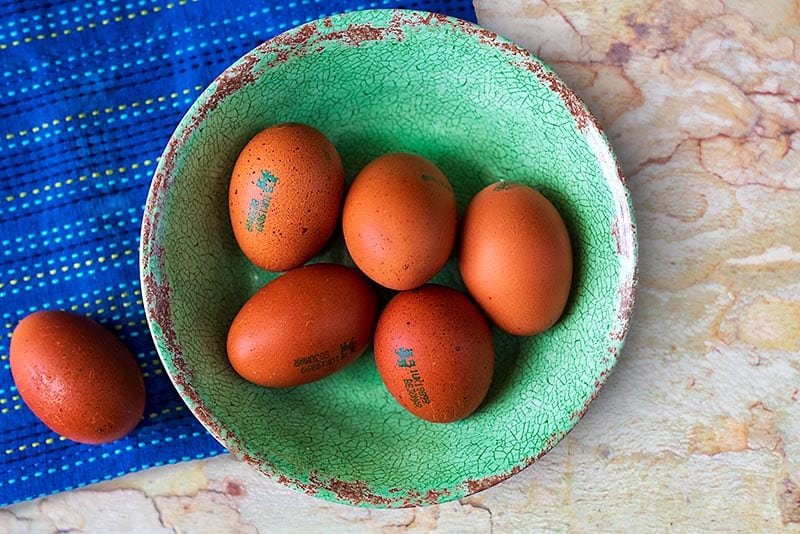
Add a tablespoon of vinegar to a large pan (you can use any vinegar, but I find rice vinegar works best)and add boiling water. Add a generous pinch of sea salt to the water.
The vinegar and salt are the key part to this, as it is the vinegar that keeps the whites together and helps you get a perfect poached egg. You can't taste the vinegar when eating the eggs either.
The salt makes the water more dense, therefore lifting the eggs off the bottom of the pan and prevents them from sticking.
Bring the water back to the boil.
Step 2: Here's the clever bit! Using a spoon, gently place the whole uncracked eggs into the boiling water for 30 seconds each. This will partially boil the outer part of the egg white, making the egg more stable and less likely to spread out when cracked into the water.
If the water isn't deep enough to cover the egg, rotate it over after 15 seconds and boil for another 15 seconds. IMPORTANT: Do not boil the eggs for more than 30 seconds.
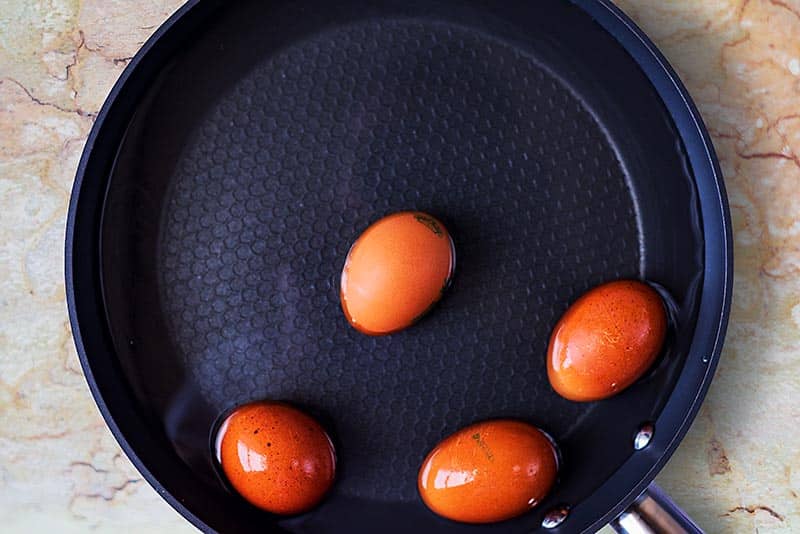
Using a slotted spoon, remove the eggs from the pan and turn the heat down to a gentle simmer.
Step 3: Use a sharp, heavy knife to break the egg shell and gently crack the egg into the simmering water. Hold the egg as close to the surface of the water as you can, without scalding your hands. Open the cracked egg just enough for the yolk to drop out, pulling the white with it.
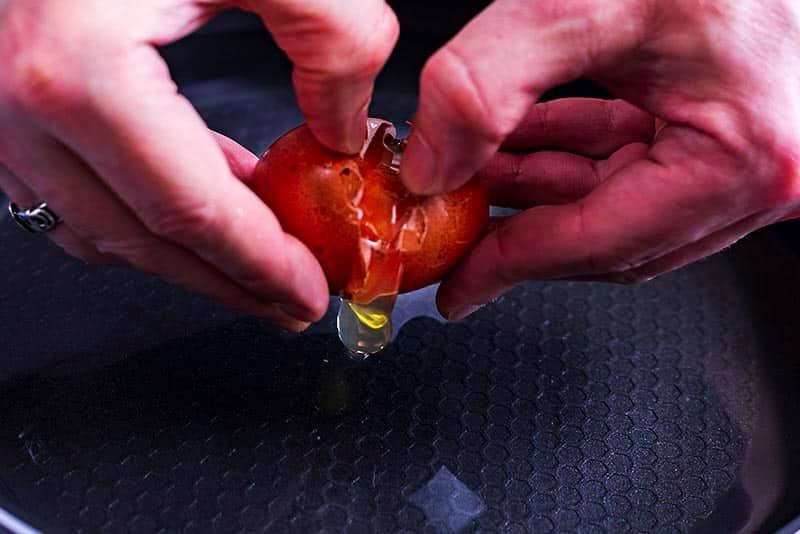
You can also add the egg to a cup or ramekin and gently pour it in, but I have more success with just cracking it in.
Step 4: Cook the eggs on a gentle simmer for 3 minutes. If you want a hard yolk, cook it for 1 minute longer. Turn the heat off but leave the eggs in the water for an additional minute.
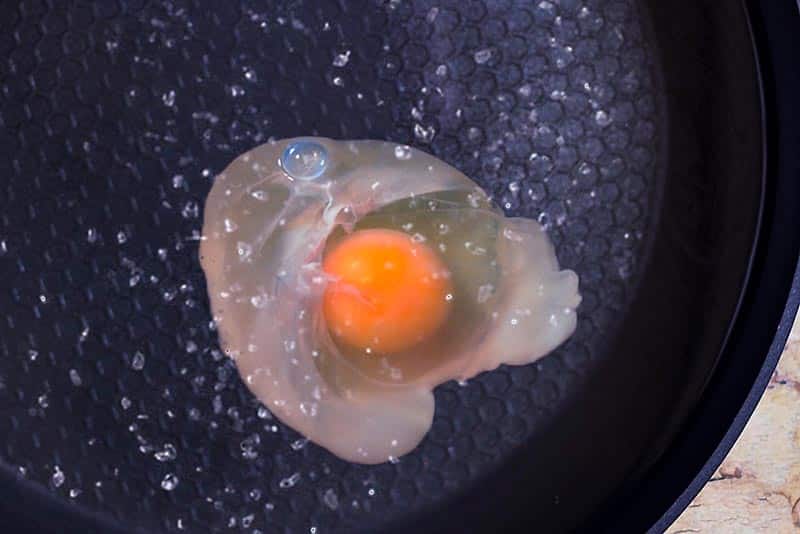
Step 5: Use a flat, slotted spatula to remove the eggs from the pan and place them on kitchen paper. This will absorb any water from the egg, meaning you won't get soggy toast!
Next, hold the edge of the spatula next to the egg and using the edge of the kitchen paper, gently flip the egg onto the spatula so it is upside down. Use your finger to gently press the underneath of the yolk to test if it is cooked to your liking. If not, return to the water for another 30-60 seconds.
What eggs to use
The fresher, the better. Fresh eggs hold together better and they also taste better. With eggs, you do get what you pay for, so make sure you use a good quality, free-range egg.
Sieve method
The method used in this how-to uses a pre-boiling technique. Instead of this, if you have a very fine mesh sieve, crack the eggs into the mesh over a bowl to remove the thinner egg white. The thicker white will remain around the egg, where you can then transfer the egg to another bowl or straight into the pan to cook. However, you need to be extremely careful with the sieve method as the yolks can easily break.
What to serve poached eggs with
Poached eggs are delicious just on some simple buttered toast with a pinch of salt and pepper. Maybe add some hot sauce for a little kick of heat. To take it further, why not add some smashed avocado to the toast? Maybe some smoked salmon? Or some wilted spinach.
Here are some other things that you can add a poached egg to:
- They are great in a bacon sandwich
- Add one to a burger
- Put one on top of a pizza
- Top a salad with a poached egg
- Make a simple spaghetti dish using our easy pasta sauce and top with a poached egg
- Shakshuka is a way of poaching eggs in a spicy tomato sauce - great for breakfast, lunch or dinner
- Huevos Rancheros - a traditional Mexican breakfast that can use poach or fried egg
- Top a comforting stew with a poached egg
- Add it to the top of Nasi Goreng (Indonesian Fried Rice) instead of the traditional omelette.
FAQs
Yes you can. If you are preparing poached eggs in advance, make sure you have a large bowl of iced water ready. Once the eggs are cooked to your liking, remove from the pan and transfer to the iced water. This will stop the cooking process immediately and keep them just right. You can keep them like this in the fridge for 3-4 days. To reheat, put some hot water in a bowl and put the eggs in it for 20-30 seconds, until warmed through.
More egg recipes
If you’ve tried this perfect poached egg recipe, let us know how you got on in the comments below.
Tag us in your creations on Instagram @hungryhealthyhappy - Use the hashtag #hungryhealthyhappy too.
Recipe
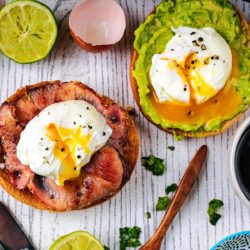
How To Make The Perfect Poached Egg
Ingredients
- 4 Eggs - (free range are best)
- Water - boiled
- 1 tablespoon Vinegar - (rice vinegar is best)
- Sea salt
Instructions
- It is best to use eggs that are room temperature, so remove your eggs from the fridge at least 30 minutes before cooking.
- Add a tablespoon of vinegar to a large pan (you can use any vinegar, but I find rice vinegar works best) and add boiling water. Add a generous pinch of sea salt to the water.The vinegar and salt are the key part to this, as it is the vinegar that keeps the whites together and helps you get a perfect poached egg. You can't taste the vinegar when eating the eggs either. The salt makes the water more dense, therefore lifting the eggs off the bottom of the pan and prevents them from sticking.
- Bring the water back to the boil.
- Here's the clever bit! Using a spoon, gently place the whole uncracked eggs into the boiling water for 30 seconds each. This will partially boil the outer part of the egg white, making the egg more stable and less likely to spread out when cracked into the water.If the water isn't deep enough to cover the egg, rotate it over after 15 seconds and boil for another 15 seconds. IMPORTANT: Do not boil the eggs for more than 30 seconds.Using a slotted spoon, remove the eggs from the pan and turn the heat down to a gentle simmer.
- Use a sharp, heavy knife to break the egg shell and gently crack the egg into the simmering water. Hold the egg as close to the surface of the water as you can, without scalding your hands. Open the cracked egg just enough for the yolk to drop out, pulling the white with it.You can also add the egg to a cup or ramekin and gently pour it in, but I have more success with just cracking it in.
- Cook the eggs on a gentle simmer for 3 minutes. If you want a hard yolk, cook it for 1 minute longer. Turn the heat off but leave the eggs in the water for an additional minute.
- Use a flat, slotted spatula to remove the eggs from the pan and place them on kitchen paper. This will absorb any water from the egg, meaning you won't get soggy toast!
- Next, hold the edge of the spatula next to the egg and using the edge of the kitchen paper, gently flip the egg onto the spatula so it is upside down. Use your finger to gently press the yolk to test if it is cooked to your liking. If not, return to the water for another 30-60 seconds.
- Serve on top of smoked salmon, avocado or both on toast.
Nutritional Information
The nutritional information provided is approximate and is calculated using online tools. Information can vary depending on various factors, but we have endeavoured to be as accurate as possible.
As all appliances vary, cooking times are a guide. Please note that by changing the serving size, the cooking time may also need to be altered.



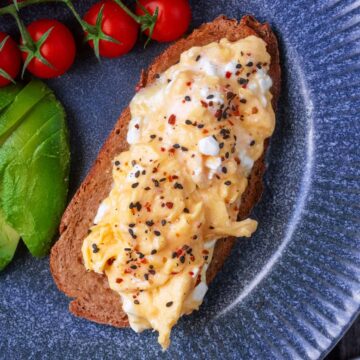

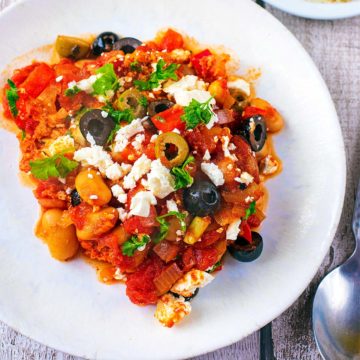
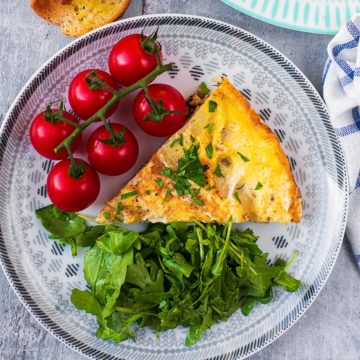
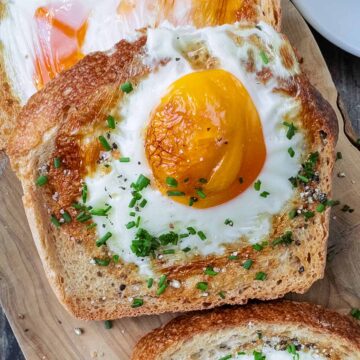
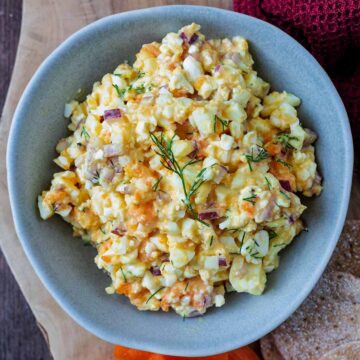
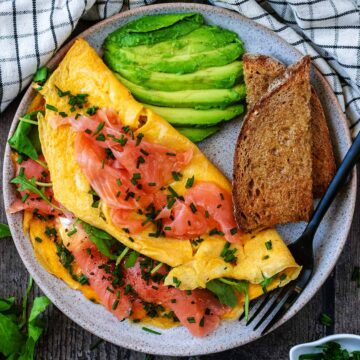
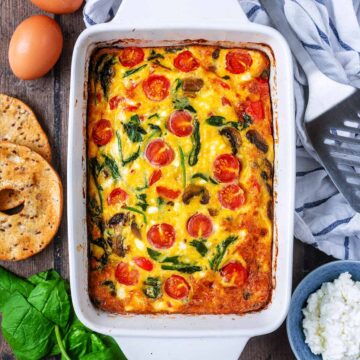
Naomi says
That looks great. I love the smoked salmon-poached egg combo too. In fact, it was how my husband first impressed me - he could cook perfect poached eggs :)
Dannii says
That would definitely impress me too. A man who can cook is a keeper!
Grace says
This is how I do mine too. Perfect every time. Unless I am making them when hungover or still half asleep and then they can be a total mess, but they always taste good and that's all that counts right?
Dannii says
Haha, I know what you mean. Cooking when hungover is never particularly productive.
Camilla Ren says
Oooh, smoked salmon for breakfast? That sounds lush!
Dannii says
It is one of my more "luxurious" breakfasts. Not something I would eat every day, but we usually have it on a Sunday :)
Ruth says
I could eat overnight oats every day and never get bored. There are so many different combinations of flavours, it is my favourite breakfast by far. Second would be poached eggs :)
Dannii says
I love overnight oats too. I have a few new flavour combinations for overnight oats coming up on the blog soon.
Helen Turney says
You can't beat a runny yolk - it is the only way to eat poached eggs in my opinion.
Dannii says
Same here. If I overdo them, I get angry. I am very passionate about my poached eggs :)
Alison says
I just signed up to your blog yesterday and this was the best first post I could get sent. I have been wondering how to get poached eggs to look like that.
Dannii says
Thanks for signing up to the blog :)
Lucy says
I am loving eggs scrambled in coconut oil at the moment.
Dannii says
Me too! The coconut oil gives it such a good flavour.
Stuart Vettese says
Right, I know what I'm having for breakfast tomorrow! Thank you, you've made me very hungry!
Dannii says
Enjoy!
Debbie says
Your breakfast looks so good. I want to eat that.
Dannii says
Sorry, I ate it all up far too quickly to share haa
Jacqueline Meldrum says
I just swirl the water in a pot and crack in the egg. Mind you yours look neater. Have to try this way too.
Dannii says
When I swirl the water, the whites go everywhere.
Jenn says
I find the fresher the egg the less likely it is to all go to pieces. I don't use vinegar just the freshest eggs I can get and it seems to work perfectly.
Dannii says
Yes, fresh eggs help too, but I don't always have super fresh eggs on hand, so this is what I do instead :)
Jan Robinson says
I am not a fan of a running yolk myself, so I will cook it for a little longer. I am not sure what it is about the yolk, but even when I was a child I never enjoyed it with my soldiers.
Dannii says
I have seen a few people say that, but it is the only way for me to eat eggs.
Louisa says
Thanks for the tutorial. I am almost annoyed that it is that simple and I never knew about it. Any idea on what it is about the vinegar that helps the whites stay together?
Dannii says
It is the acid in the vinegar. You can use lemon juice too.
Catorina says
Yolk porn! <3
Dannii says
It's the only way to eat eggs!
Beccy says
I second the request for tutorials. Things like how to cook perfect brown rice and quinoa would be good.
Dannii says
I shall add it to the list :)